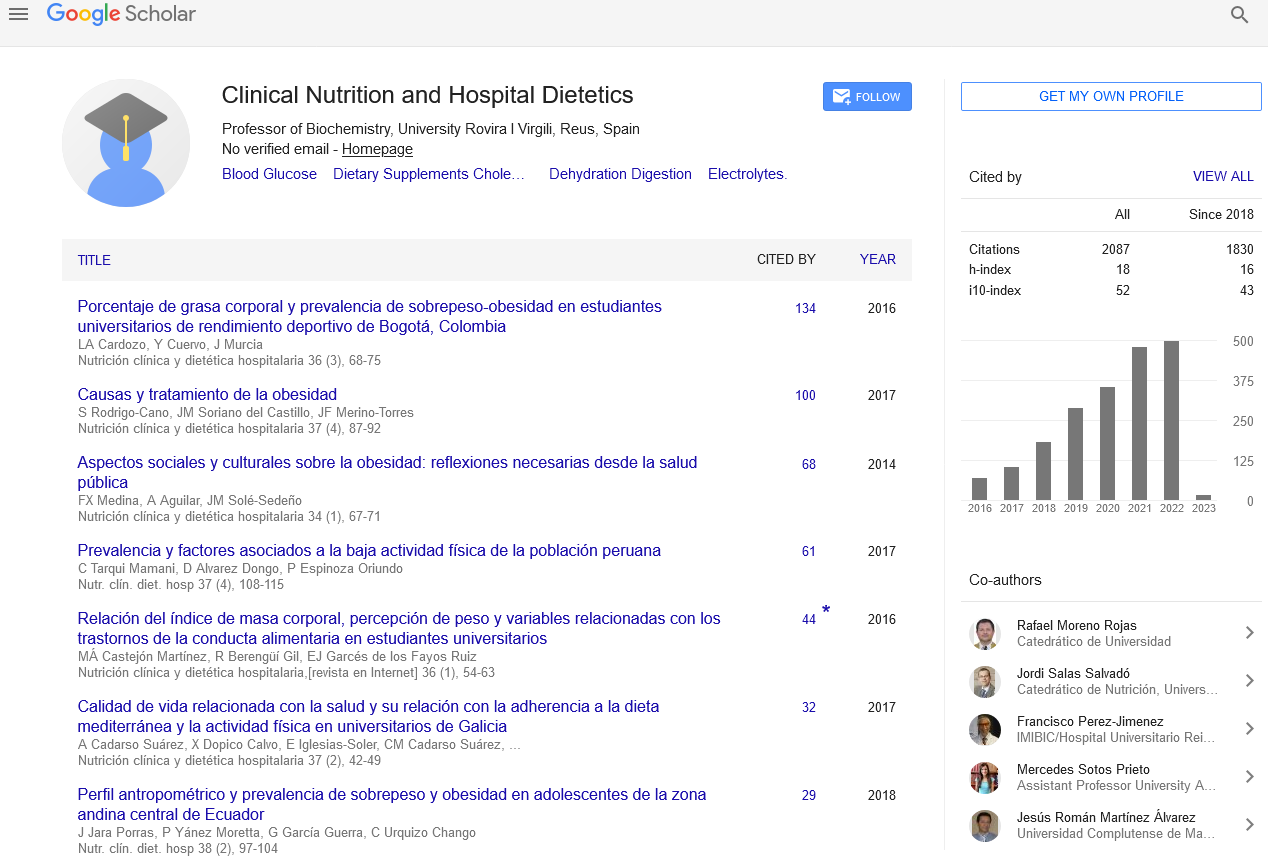Abstract
Nutrition therapy in gynecology and obstetrics in Hospital Public University of Brazil
Author(s): Feliciano da Silva, Claudia1; Lúcia de Mendonca Soares, Bruna2; Pessoa de Araújo Burgos, Maria Goretti2
Introduction: Nutritional therapy (TN) is defined as the supply of nutrients orally, enterally or parenterally with therapeutic intent.
Methods: Retrospective study from 2009 to 2013, where NT (oral, enteral, parenteral) was evaluated in 183 patients admitted to the Hospital of the Federal University of Pernambuco, through information contained in the database of nutrition/pharmacy services. To perform the statistical analysis, were applied the Student t, χ2 and ANOVA tests.
Results: The predominant clinical was the gynecology (82%). The overall mean age was 49.0 ± 17.1 years. The most frequent type of NT was oral (67.2%). In gynecology, the most frequent pathology was neoplasm of the cervix (27.1%), obstetrics 56.3% were high-risk pregnants. Anorexia was the most frequent indication independent of the clinic. Most patients received oral NT normocaloric, with the highest percentage of polymeric formulas. As for fiber, 79.3%of EN (enteral nutrition) formulas contained fibers, differing from oral NT (p = 0.0023). Parenteral nutrition predominated gynecological patients (85.7%). One can see that the EN owned calorie greater than the oral NT (p <0.0001). The time of administration mean was 10.3 ± 10.9 days (1-83 days), with no difference between the studied clinics (p = 0.6).
Conclusions: polymer, normocaloric, normoproteic, normoglicidic and normolipidic oral NT predominated in the study group, and the gynecology patients the ones that took the therapy.
Google Scholar citation report
Citations : 2439
Clinical Nutrition and Hospital Dietetics received 2439 citations as per google scholar report
Indexed In
- Google Scholar
- Open J Gate
- Genamics JournalSeek
- Academic Keys
- JournalTOCs
- ResearchBible
- SCOPUS
- Ulrich's Periodicals Directory
- Access to Global Online Research in Agriculture (AGORA)
- Electronic Journals Library
- RefSeek
- Hamdard University
- EBSCO A-Z
- OCLC- WorldCat
- SWB online catalog
- Virtual Library of Biology (vifabio)
- Publons
- MIAR
- Geneva Foundation for Medical Education and Research
- Euro Pub
- Web of Science
Journal Highlights
- Blood Glucose
- Dietary Supplements
- Cholesterol, Dehydration
- Digestion
- Electrolytes
- Clinical Nutrition Studies
- energy balance
- Diet quality
- Clinical Nutrition and Hospital Dietetics




